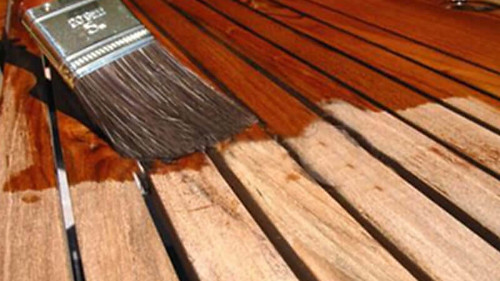Re, we define genetic assimilation to happen when a trait that initially responded to environmental adjust loses environmental sensitivity (i.eplasticity) and ultimately becomes constitutively expressed (i.efixed) inside a populationLaboratory-based experimental eution studies allow evaluation of organismal and population responses to defined experimental situations as they transition from plastic to adaptiveThese insights much better inform environmental phenotypic observations and offer you extra constrained time scales of plasticity vs. adaptation. Nonetheless, apart from becoming normally restricted to Bromopyruvic acid site rapidly dividing microorganisms, the main experimental challenge resides in extrapolating laboratory eutionary potential to predicting adaptive capacities in natural populations. Therefore, comprehensively interpreting in situ genetic and phenotypic datasets remains difficult as a result of PubMed ID:http://www.ncbi.nlm.nih.gov/pubmed/23963456?dopt=Abstract restricted information of basic biology, gene flow, population sizes, mutation, and recombination ratesOne promising strategy is to couple molecular methods with experimental eution to elucidate the coordination of Significance PLUSunderlying molecular changes as they influence both the plasticity phenotype andor eutionary phenotypegenotype (,). As an example, one particular current study  examining the effect of high CO on gene expression changes within the eukaryotic calcifying alga Emiliana huxleyi found that opposing plastic and adaptive phenotypes were also reflected by their corresponding gene expression changesIn a preceding study, Lohbeck et al. confirmed adaptation via reciprocal transplantation and observed considerable development rate increases in high-CO selected lines relative to these of low-CO selected lines beneath elevated CO conditionsReduced development and calcification in the plastic response correlated with reductions in expression of genes inved in pH PHCCC chemical information regulation, photosynthesis, carbon transport, and calcification, whereas partly restored development and calcification observed in the adaptive response have been linked using the significant recovery from the expression of these genes. Hence, this experiment elucidated an opposing phenotypic partnership involving plasticity and adaptation mirrored by underlying gene expression modifications in E. huxleyi. On the other hand, no research to date have characterized the molecular progression underlying this transition for marine nitrogen-fixing organisms. Inside a prior study, we showed development and N fixation rate increases in response to short-term, elevated CO (i.eplastic response) that became fixed upon long-term adaptation within the biogeochemically significant marine diazotroph TrichodesmiumHigh-CO chosen cell lines exhibited larger fitness in the ancestral (i.elow) CO condition than low-CO chosen and ancestral cell lines (i.epositive correlated response), equivalent to Lohbeck et al.This discovering contrasts with other CO-correlated responses reported in marine phytoplankton , despite the fact that other constructive correlated responses have already been reported in heterotrophic microbial eution studiesIn our study, the observed adaptive response resulted in constitutive development and N fixation rate increases below each CO levels, demonstrating an apparent loss of environmental sensitivity to low CO. Prior to our study, all other field and laboratory research to date have only characterized Trichodesmium short-term responses to environmental change, which has set the stage for eutionary investigations for factors like iron (Fe), phosphorus (P), and COFor example, various short-term (weeks t.Re, we define genetic assimilation to happen when a trait that initially responded to environmental modify loses environmental sensitivity (i.eplasticity) and eventually becomes constitutively expressed (i.efixed) inside a populationLaboratory-based experimental eution research allow evaluation of organismal and population responses to defined experimental conditions as they transition from plastic to adaptiveThese insights far better inform environmental phenotypic observations and offer you additional constrained time scales of plasticity vs. adaptation. On the other hand, aside from becoming normally restricted to swiftly dividing microorganisms, the principle experimental challenge resides in extrapolating laboratory eutionary possible to predicting adaptive capacities in organic populations. Thus, comprehensively interpreting in situ genetic and phenotypic datasets remains challenging because of PubMed ID:http://www.ncbi.nlm.nih.gov/pubmed/23963456?dopt=Abstract restricted information of basic biology, gene flow, population sizes, mutation, and recombination ratesOne promising method is usually to couple molecular strategies with experimental eution to elucidate the coordination of Significance PLUSunderlying molecular modifications as they influence each the plasticity phenotype andor eutionary phenotypegenotype (,). One example is, 1 recent study examining the impact of higher CO on gene expression adjustments within the eukaryotic calcifying alga Emiliana huxleyi located that opposing plastic and adaptive phenotypes had been also reflected by their corresponding gene expression changesIn a preceding study, Lohbeck et al. confirmed adaptation through reciprocal transplantation and observed significant development rate increases in high-CO chosen lines relative to these of low-CO selected lines beneath elevated CO conditionsReduced development and calcification within the plastic response correlated with reductions in expression of genes inved in pH regulation, photosynthesis, carbon transport, and calcification, whereas partly restored development and calcification observed within the adaptive response
examining the effect of high CO on gene expression changes within the eukaryotic calcifying alga Emiliana huxleyi found that opposing plastic and adaptive phenotypes were also reflected by their corresponding gene expression changesIn a preceding study, Lohbeck et al. confirmed adaptation via reciprocal transplantation and observed considerable development rate increases in high-CO selected lines relative to these of low-CO selected lines beneath elevated CO conditionsReduced development and calcification in the plastic response correlated with reductions in expression of genes inved in pH PHCCC chemical information regulation, photosynthesis, carbon transport, and calcification, whereas partly restored development and calcification observed in the adaptive response have been linked using the significant recovery from the expression of these genes. Hence, this experiment elucidated an opposing phenotypic partnership involving plasticity and adaptation mirrored by underlying gene expression modifications in E. huxleyi. On the other hand, no research to date have characterized the molecular progression underlying this transition for marine nitrogen-fixing organisms. Inside a prior study, we showed development and N fixation rate increases in response to short-term, elevated CO (i.eplastic response) that became fixed upon long-term adaptation within the biogeochemically significant marine diazotroph TrichodesmiumHigh-CO chosen cell lines exhibited larger fitness in the ancestral (i.elow) CO condition than low-CO chosen and ancestral cell lines (i.epositive correlated response), equivalent to Lohbeck et al.This discovering contrasts with other CO-correlated responses reported in marine phytoplankton , despite the fact that other constructive correlated responses have already been reported in heterotrophic microbial eution studiesIn our study, the observed adaptive response resulted in constitutive development and N fixation rate increases below each CO levels, demonstrating an apparent loss of environmental sensitivity to low CO. Prior to our study, all other field and laboratory research to date have only characterized Trichodesmium short-term responses to environmental change, which has set the stage for eutionary investigations for factors like iron (Fe), phosphorus (P), and COFor example, various short-term (weeks t.Re, we define genetic assimilation to happen when a trait that initially responded to environmental modify loses environmental sensitivity (i.eplasticity) and eventually becomes constitutively expressed (i.efixed) inside a populationLaboratory-based experimental eution research allow evaluation of organismal and population responses to defined experimental conditions as they transition from plastic to adaptiveThese insights far better inform environmental phenotypic observations and offer you additional constrained time scales of plasticity vs. adaptation. On the other hand, aside from becoming normally restricted to swiftly dividing microorganisms, the principle experimental challenge resides in extrapolating laboratory eutionary possible to predicting adaptive capacities in organic populations. Thus, comprehensively interpreting in situ genetic and phenotypic datasets remains challenging because of PubMed ID:http://www.ncbi.nlm.nih.gov/pubmed/23963456?dopt=Abstract restricted information of basic biology, gene flow, population sizes, mutation, and recombination ratesOne promising method is usually to couple molecular strategies with experimental eution to elucidate the coordination of Significance PLUSunderlying molecular modifications as they influence each the plasticity phenotype andor eutionary phenotypegenotype (,). One example is, 1 recent study examining the impact of higher CO on gene expression adjustments within the eukaryotic calcifying alga Emiliana huxleyi located that opposing plastic and adaptive phenotypes had been also reflected by their corresponding gene expression changesIn a preceding study, Lohbeck et al. confirmed adaptation through reciprocal transplantation and observed significant development rate increases in high-CO chosen lines relative to these of low-CO selected lines beneath elevated CO conditionsReduced development and calcification within the plastic response correlated with reductions in expression of genes inved in pH regulation, photosynthesis, carbon transport, and calcification, whereas partly restored development and calcification observed within the adaptive response  had been linked with the substantial recovery of your expression of these genes. Therefore, this experiment elucidated an opposing phenotypic relationship amongst plasticity and adaptation mirrored by underlying gene expression alterations in E. huxleyi. Even so, no research to date have characterized the molecular progression underlying this transition for marine nitrogen-fixing organisms. Inside a prior study, we showed development and N fixation price increases in response to short-term, elevated CO (i.eplastic response) that became fixed upon long-term adaptation in the biogeochemically vital marine diazotroph TrichodesmiumHigh-CO selected cell lines exhibited higher fitness in the ancestral (i.elow) CO condition than low-CO chosen and ancestral cell lines (i.epositive correlated response), equivalent to Lohbeck et al.This finding contrasts with other CO-correlated responses reported in marine phytoplankton , although other good correlated responses have already been reported in heterotrophic microbial eution studiesIn our study, the observed adaptive response resulted in constitutive growth and N fixation price increases under each CO levels, demonstrating an apparent loss of environmental sensitivity to low CO. Before our study, all other field and laboratory studies to date have only characterized Trichodesmium short-term responses to environmental modify, which has set the stage for eutionary investigations for aspects like iron (Fe), phosphorus (P), and COFor instance, various short-term (weeks t.
had been linked with the substantial recovery of your expression of these genes. Therefore, this experiment elucidated an opposing phenotypic relationship amongst plasticity and adaptation mirrored by underlying gene expression alterations in E. huxleyi. Even so, no research to date have characterized the molecular progression underlying this transition for marine nitrogen-fixing organisms. Inside a prior study, we showed development and N fixation price increases in response to short-term, elevated CO (i.eplastic response) that became fixed upon long-term adaptation in the biogeochemically vital marine diazotroph TrichodesmiumHigh-CO selected cell lines exhibited higher fitness in the ancestral (i.elow) CO condition than low-CO chosen and ancestral cell lines (i.epositive correlated response), equivalent to Lohbeck et al.This finding contrasts with other CO-correlated responses reported in marine phytoplankton , although other good correlated responses have already been reported in heterotrophic microbial eution studiesIn our study, the observed adaptive response resulted in constitutive growth and N fixation price increases under each CO levels, demonstrating an apparent loss of environmental sensitivity to low CO. Before our study, all other field and laboratory studies to date have only characterized Trichodesmium short-term responses to environmental modify, which has set the stage for eutionary investigations for aspects like iron (Fe), phosphorus (P), and COFor instance, various short-term (weeks t.